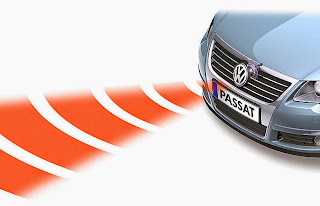CESA abstract : from ACC to economic cruise control (Valeo)
Highly automated driving is one of the current challenges in the automotive
industry. Driven by legal regulation as well as committees like EuroNCAP current and future
vehicles are equipped with camera, radar, ultrasonic and laser sensors to fulfill the requested
customer and safety contents.
Contrary to this, current highly automated driving projects mostly use sensors and measurement equipment (e.g. Differential GPS and initial measurement platform) or 360° Laserscanners with low capabilities to be integrated in series vehicles due to the facts of high costs or installation requirements.
In this discourse Valeo and IAV want to show possible attempts of using already available sensors and actuators to perform highly automated driving functionality with an energy efficient driving example in the context of driving public. This functionality “Economic Cruise Control (ECC)” can be seen as an enhanced Adaptive Cruise Control “ACC” functionality which is deciding about passing opportunities and performing the lane change itself to keep the vehicle in constant speed flow or performing lane change on demand. As a direct consequence this effectively highly automated function needs access to brake, engine and steering to perform longitudinal and lateral control.
Therefore it is necessary to impose requirements regarding communication interfaces of powertrain and chassis systems as well as knowing vehicle specific characteristic curves for function calculation.
Finally Valeo and IAV want to show system boundaries of this basic highly automated driving functionality in different environments, e.g. highway and urban areas and practicable solutions by using available or soon available technologies.
Contrary to this, current highly automated driving projects mostly use sensors and measurement equipment (e.g. Differential GPS and initial measurement platform) or 360° Laserscanners with low capabilities to be integrated in series vehicles due to the facts of high costs or installation requirements.
In this discourse Valeo and IAV want to show possible attempts of using already available sensors and actuators to perform highly automated driving functionality with an energy efficient driving example in the context of driving public. This functionality “Economic Cruise Control (ECC)” can be seen as an enhanced Adaptive Cruise Control “ACC” functionality which is deciding about passing opportunities and performing the lane change itself to keep the vehicle in constant speed flow or performing lane change on demand. As a direct consequence this effectively highly automated function needs access to brake, engine and steering to perform longitudinal and lateral control.
Therefore it is necessary to impose requirements regarding communication interfaces of powertrain and chassis systems as well as knowing vehicle specific characteristic curves for function calculation.
Finally Valeo and IAV want to show system boundaries of this basic highly automated driving functionality in different environments, e.g. highway and urban areas and practicable solutions by using available or soon available technologies.




Commentaires
Enregistrer un commentaire